The setting for Roma Nova
by Alison Morton

Imagining Roma Nova – Or is it real?
Ever since I read Violet Needham’s Stormy Petrel series as a child I’ve been caught by the idea of imaginary countries in Central Europe. Needham’s books for children invoke a romantic ‘otherwhere’, making it familiar, with a subtle, understated magical tone. Possibly seeming old-fashioned now, she’s very much the unsung, and sadly unknown, mother of modern fantasy with a mix of heroism, sacrifice and honour. At first her books were deemed by (grown-up) publishers to be too complex for children, but the story goes that one of the children of a family director at William Collins publishers loved the story, so it was accepted for publication. Talk about serendipity!
A little older, I was entranced by The Prisoner of Zenda and its sequel Rupert of Hentzau – classic examples of ‘Central Europe’. I thirsted after everything I could find about this amorphous region with no defined boundaries but a definite idea of itself. The Austro-Hungarian Empire seemed to be a concrete representation, but it wasn’t quite. When I learnt German, I found many ideas and writings about Mitteleuropa as a concept. As an adult, I found The Radetzky March by Joseph Roth to be a sweeping history of heroism and duty, desire and compromise, tragedy and heartbreak, a story over generations that lasts until the eve of the First World War. But that empire was vast, diverse and autocratic. Like the Ancient Roman Empire, it collapsed under its own weight and the pressure of people’s desire for their own homeland and self-governance, whether by conquest or democracy.
With all that in mind, my even greater obsession with all 1,229 years of Ancient Rome and a reasonably good knowledge of the alpine regions, I dreamt about an ideal place for the setting for my Romans seeking a new home. But it would be a small colonia, not an empire! It had to be fertile enough to sustain people, defendable and off the beaten track. So I started researching…

Imagine my delight when I found in real history that at the dusk of the Western Roman Empire people had actually established safe places in the mountains called Fliehburgen. A number of these successfully protected their population during the barbarian invasions, sometimes developing into permanent settlements for decades in the most dangerous periods. And for the Roma Novans, this became necessary in the years after the story in EXSILIUM.
Over their history, the Roma Novans, cultivated their land, built their cities, suffered invasion, rebuilt their cities, extended their holdings, negotiated treaties and managed to survive into the 21st century when the first modern Roma Nova adventure takes place in INCEPTIO.
What does Roma Nova look like in the 21st century?
It’s an alpine country with lower lying valleys a few small towns (Castra Lucilla to the south of the main city, Brancadorum at the east, Aquae Caesaris to the west) and a river city full of columns, a forum, Senate house and temples. High mountains and hills to three sides, although very useful for defence in past ages, keep the 21st century pilots from Air Roma Nova (and most international airlines) on their toes when landing their passenger aircraft after a long haul flight!
Sadly, you can’t use Google Maps to view Roma Nova’s geography from space nor load a Wikipedia page for its history. But inventing a country doesn’t mean you can throw any old facts into your book. They have to hang together. Geography is very important as you need to know what crops they can grow – spelt, oats, olives in sheltered areas, vines, vegetables and fruit – and what animals they raise – cows, sheep, horses, pigs, poultry, etc.

To look back to when those first Roman dissidents left Italy in AD 395 and trekked north to found Roma Nova, I also needed to deepen my specific knowledge about Roman life and culture at that time: their mindset, their customs, their concerns, their ways of doing things. As a reference, the first chapters of Christopher Wickham’s book The Inheritance of Rome draws a clear and detailed picture.
With the Roma Nova books, I’ve used terms that people might already know like the Roman sword, gladius, greeting such as salve, solidi as money, ranks like legate and centurion. But I’ve made the gladius carbon steel, the solidi have currency notes, debit cards and apps as well as coins, and I’ve mixed in other European military ranks such as captain in with traditional Roman ranks. It gives a sense of history that’s gone forward and adapted to the modern age.
Ancient Romans were fabulous engineers and technologists, organised and determined to apply practical solutions to the needs of their complex and demanding civilisation, so I’ve positioned them in the 21st century at the forefront of the communications and digital revolutions.
The silver mines in Roma Nova’s mountains and the resulting processing industry that underpinned Roma Nova’s early economy, and still play an extremely important role in 21st century Roma Nova, are another allusion to ancient Rome. Silver was a big reason the Romans wanted Britannia. Dacia (Romania) and Noricum (Austria) in central Europe were also of special significance to ancient Rome, as they were very rich in high quality deposits of silver, as well as iron ore, some gold and rare earths. Giving Roma Nova extensive silver deposits provides a strong, plausible reason for its economic survival through the ages.
I also wanted my imaginary country to be near Italy and Austria for international connections. So it had to be in south central Europe. In the end, I pinched Carinthia in southern Austria, and northern Slovenia as my models. And in summer 2023, I went to the old Noricum capital of Virunum, near Klagenfurt in Austria and was thrilled to visit breathe in the air of ‘Roma Nova’.
Alison Morton © March, 2024
Alison’s social media links:
Connect with Alison on her thriller site: https://alison-morton.com
Facebook author page: https://www.facebook.com/AlisonMortonAuthor
X/Twitter: https://twitter.com/alison_morton @alison_morton
Alison’s writing blog: https://alisonmortonauthor.com
Instagram: https://www.instagram.com/alisonmortonauthor/
Goodreads: https://www.goodreads.com/author/show/5783095.Alison_Morton
Threads: https://www.threads.net/@alisonmortonauthor
Alison’s Amazon page: https://Author.to/AlisonMortonAmazon
Newsletter sign-up: https://www.alison-morton.com/newsletter/

 I use several real historical figures as additional characters alongside my scallywag protagonist, Captain Jesamiah Acorne, because the history is important as a background to his various sea-going adventures.
I use several real historical figures as additional characters alongside my scallywag protagonist, Captain Jesamiah Acorne, because the history is important as a background to his various sea-going adventures.
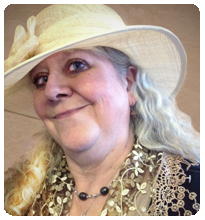 ABOUT HELEN HOLLICK
ABOUT HELEN HOLLICK
 From my desk here in the Province of Málaga I can see the Sierra de Las Nieves. This was where the Moors of Al-Ándalus used to harvest snow to be collected in summer for sherbet and to keep medicines cool. To the right out of a large picture window is the bandalero country of The Empress Emerald; to the left, beyond mauve-shaded mountains, are ancient fishing villages now known as the Costa del Sol, but once prey to the Barbary corsairs featured in The Chosen Man Trilogy.
From my desk here in the Province of Málaga I can see the Sierra de Las Nieves. This was where the Moors of Al-Ándalus used to harvest snow to be collected in summer for sherbet and to keep medicines cool. To the right out of a large picture window is the bandalero country of The Empress Emerald; to the left, beyond mauve-shaded mountains, are ancient fishing villages now known as the Costa del Sol, but once prey to the Barbary corsairs featured in The Chosen Man Trilogy. 
 Despite my somewhat Latinized outlook, though, what I see through my Spanish picture window when I am at my desk in Málaga is still with a realistic Englishwoman’s eyes.
Despite my somewhat Latinized outlook, though, what I see through my Spanish picture window when I am at my desk in Málaga is still with a realistic Englishwoman’s eyes.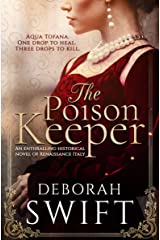 If, like me, you enjoy novels that takes you into the past and/or far away, check out the excellent Bristish historical fiction author, Deborah Swift. She has a new novel set in 17th century Italy out now, too.
If, like me, you enjoy novels that takes you into the past and/or far away, check out the excellent Bristish historical fiction author, Deborah Swift. She has a new novel set in 17th century Italy out now, too.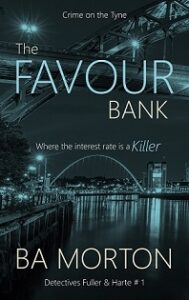 If you enjoy gritty, contemporary British police crime fiction, try B.A. Morton’s frightening, heart-rending ‘Crime on the Tyne’.
If you enjoy gritty, contemporary British police crime fiction, try B.A. Morton’s frightening, heart-rending ‘Crime on the Tyne’.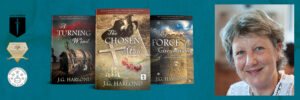
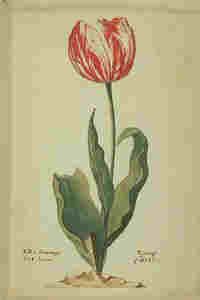 The first extract is from Book 1 of The Chosen Man Trilogy. It is 1635, charismatic Genoese merchant Ludovico da Portovenere (Ludo) is engaged in a conspiracy to inflate the tulip market in what became known as tulip fever. At this stage, readers are not sure whether Ludo is to be trusted, whether he’s a goodie or a baddie. How he handles his young Spanish servant Marcos here suggests he exploits people for his own ends. The dialogue also carries vital details about ‘tulipmania’.
The first extract is from Book 1 of The Chosen Man Trilogy. It is 1635, charismatic Genoese merchant Ludovico da Portovenere (Ludo) is engaged in a conspiracy to inflate the tulip market in what became known as tulip fever. At this stage, readers are not sure whether Ludo is to be trusted, whether he’s a goodie or a baddie. How he handles his young Spanish servant Marcos here suggests he exploits people for his own ends. The dialogue also carries vital details about ‘tulipmania’.
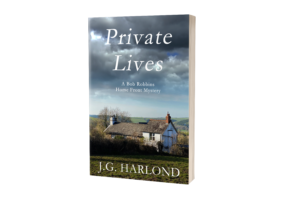
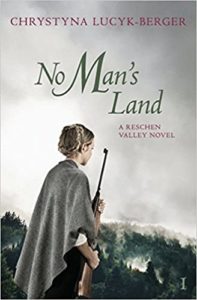

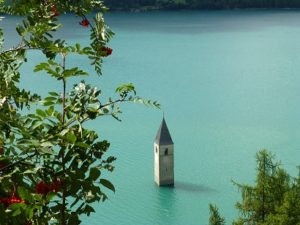




 At midnight on a doom-laden Hallowe’en three young lasses sit round the hearth in the West Tower, gazing into the flames trying to divine their future. From this fortress perched high on a rocky outcrop on the banks of the River Tyne, accessible only by a narrow farm track, the powerful Hepburn family, the Earls of Bothwell, controlled the lands of East Lothian. Though now a ruin, this hidden gem retains many features still recognisable enough to fire the novelist’s imagination. In the Great Hall, the earls would host grand banquets prepared in the vaulted kitchen underneath where scullions would turn spits over huge fires; children would scamper up and down the turnpike staircases of the three towers, and prisoners would languish in the two pit prisons or oubliettes – one of which is said to have contained George Wishart after his arrest. What must it have been like to have been lowered down into a pit and left in complete darkness on a freezing winter’s night?
At midnight on a doom-laden Hallowe’en three young lasses sit round the hearth in the West Tower, gazing into the flames trying to divine their future. From this fortress perched high on a rocky outcrop on the banks of the River Tyne, accessible only by a narrow farm track, the powerful Hepburn family, the Earls of Bothwell, controlled the lands of East Lothian. Though now a ruin, this hidden gem retains many features still recognisable enough to fire the novelist’s imagination. In the Great Hall, the earls would host grand banquets prepared in the vaulted kitchen underneath where scullions would turn spits over huge fires; children would scamper up and down the turnpike staircases of the three towers, and prisoners would languish in the two pit prisons or oubliettes – one of which is said to have contained George Wishart after his arrest. What must it have been like to have been lowered down into a pit and left in complete darkness on a freezing winter’s night? Marie Macpherson hails from from the historic town of Musselburgh, six miles from the Scottish capital Edinburgh, but left the Honest Toun to study Russian at Strathclyde University. She spent a year in the former Soviet Union to research her PhD thesis on the 19th century Russian writer, Mikhail Lermontov, said to be descended from the poet and seer, Thomas the Rhymer.
Marie Macpherson hails from from the historic town of Musselburgh, six miles from the Scottish capital Edinburgh, but left the Honest Toun to study Russian at Strathclyde University. She spent a year in the former Soviet Union to research her PhD thesis on the 19th century Russian writer, Mikhail Lermontov, said to be descended from the poet and seer, Thomas the Rhymer.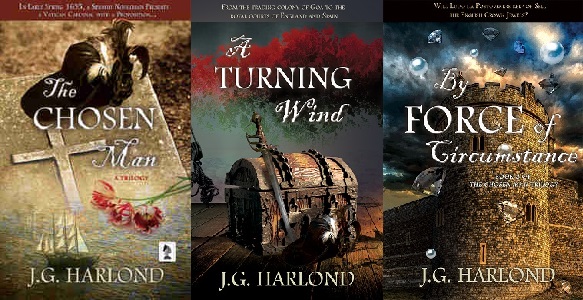
 A long, long time ago I had a gap year job in a jewellery and antique shop, it wasn’t what I wanted to do for the rest of my life, but I learnt a lot and it helped greatly while preparing notes for A Turning Wind. During my research, I came across the writing of the French merchant-explorer Jean-Baptiste Tavernier (1605-1689). In a spell-binding account of how diamonds were mined in the Golconda region of India, Tavernier quotes an account supposedly written by Marco Polo of how diamonds were found and traded in the area centuries before. It was too good not to use so I wove it into the opening scene. That, and the ancient ethical origins of the game Snakes and Ladders, created the background for Ludo’s second adventure, via documented history on Portugal and the ambitious Duchess of Braganza, and a little known, unrealized treaty between Charles 1st and Felipe IV of Spain. Having spent many years living near El Escorial, the scenes set there with the infamous Conde-Duque de Olivares and Velazquez were easy to write.
A long, long time ago I had a gap year job in a jewellery and antique shop, it wasn’t what I wanted to do for the rest of my life, but I learnt a lot and it helped greatly while preparing notes for A Turning Wind. During my research, I came across the writing of the French merchant-explorer Jean-Baptiste Tavernier (1605-1689). In a spell-binding account of how diamonds were mined in the Golconda region of India, Tavernier quotes an account supposedly written by Marco Polo of how diamonds were found and traded in the area centuries before. It was too good not to use so I wove it into the opening scene. That, and the ancient ethical origins of the game Snakes and Ladders, created the background for Ludo’s second adventure, via documented history on Portugal and the ambitious Duchess of Braganza, and a little known, unrealized treaty between Charles 1st and Felipe IV of Spain. Having spent many years living near El Escorial, the scenes set there with the infamous Conde-Duque de Olivares and Velazquez were easy to write.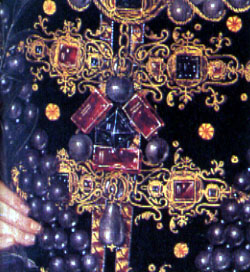 One of my aims while writing this trilogy was to show how decisions made in high places can have appalling consequences for ordinary members of society. This story in particular shows how one’s personal destiny can be determined by events far beyond one’s control. The over-riding circumstance here is a civil war. What happens to Ludo, Alina and Marcos is determined by a conflict not of their making in a country not their own and their efforts to safeguard their families. Regrettably, it is something many readers can relate to nowadays.
One of my aims while writing this trilogy was to show how decisions made in high places can have appalling consequences for ordinary members of society. This story in particular shows how one’s personal destiny can be determined by events far beyond one’s control. The over-riding circumstance here is a civil war. What happens to Ludo, Alina and Marcos is determined by a conflict not of their making in a country not their own and their efforts to safeguard their families. Regrettably, it is something many readers can relate to nowadays.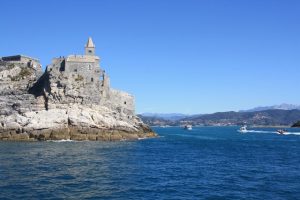 This final story takes Ludo back to Portovenere in Liguria, Italy – a place I have visited many times. The name derives from a temple dedicated to the goddess Venus; and there’s a Doria castle there too. Agustin, the Doria Doge of Genoa of the epoch, had a daughter, she is un-named in the Doria family tree but she may have lived there. Barbary corsairs constantly raided the Ligurian coast – so again, what if . . .?
This final story takes Ludo back to Portovenere in Liguria, Italy – a place I have visited many times. The name derives from a temple dedicated to the goddess Venus; and there’s a Doria castle there too. Agustin, the Doria Doge of Genoa of the epoch, had a daughter, she is un-named in the Doria family tree but she may have lived there. Barbary corsairs constantly raided the Ligurian coast – so again, what if . . .?
 I self-published the first title, Warhorn – Sons of Iberia, in 2013 and the fourth will be available in the Spring of 2019. The series is set during the 2nd Punic War which was fought between Carthage and Rome between 218BC and 202BC.
I self-published the first title, Warhorn – Sons of Iberia, in 2013 and the fourth will be available in the Spring of 2019. The series is set during the 2nd Punic War which was fought between Carthage and Rome between 218BC and 202BC. While the ancient people of Iberia are long gone, their land remains largely unchanged and just as dramatic. The river Tagus which flows a thousand kilometers across Spain and Portugal to the Atlantic from its wellspring in the Fuente de García. The wild coast of the Costa Brava. The moon-like Bardenas Reales. Interesting local settings are vital in creating depth and atmosphere in any tale and from the beautiful blue coastal waters of the Mediterranean to the high mountains of the Pyrenees, Iberia offers a palette of landscapes in which countless deeds of heroism wait to unfold.
While the ancient people of Iberia are long gone, their land remains largely unchanged and just as dramatic. The river Tagus which flows a thousand kilometers across Spain and Portugal to the Atlantic from its wellspring in the Fuente de García. The wild coast of the Costa Brava. The moon-like Bardenas Reales. Interesting local settings are vital in creating depth and atmosphere in any tale and from the beautiful blue coastal waters of the Mediterranean to the high mountains of the Pyrenees, Iberia offers a palette of landscapes in which countless deeds of heroism wait to unfold. Other wonderful creatures that still roam the wilds of Iberia include the endangered Iberian lynx, brown bear, and Spanish Ibex. The Iberian lynx often features in Sons of Iberia and I begin the series through the eyes of a lynx.
Other wonderful creatures that still roam the wilds of Iberia include the endangered Iberian lynx, brown bear, and Spanish Ibex. The Iberian lynx often features in Sons of Iberia and I begin the series through the eyes of a lynx. Glenn Bauer – Sources and links:
Glenn Bauer – Sources and links: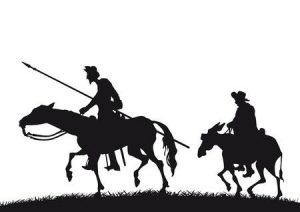 Healthy, well-trained horses entered in modern long-distance races, sometimes called endurance races (for a very good reason) can cover up to 100 miles in a day. The favoured breed is the Arabian, but while the type of breed matters, it’s the training that is important. Each mount has to be prepared for these distances over a long period of time, and this includes getting used to eating hard fodder at different times of the day, which many horses do not or will not do.
Healthy, well-trained horses entered in modern long-distance races, sometimes called endurance races (for a very good reason) can cover up to 100 miles in a day. The favoured breed is the Arabian, but while the type of breed matters, it’s the training that is important. Each mount has to be prepared for these distances over a long period of time, and this includes getting used to eating hard fodder at different times of the day, which many horses do not or will not do.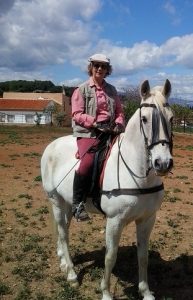 A final word: these blog posts are written from my personal experience of a life-time caring for and training horses. If you go to other on-line sources you may find conflicting or differing information.
A final word: these blog posts are written from my personal experience of a life-time caring for and training horses. If you go to other on-line sources you may find conflicting or differing information.